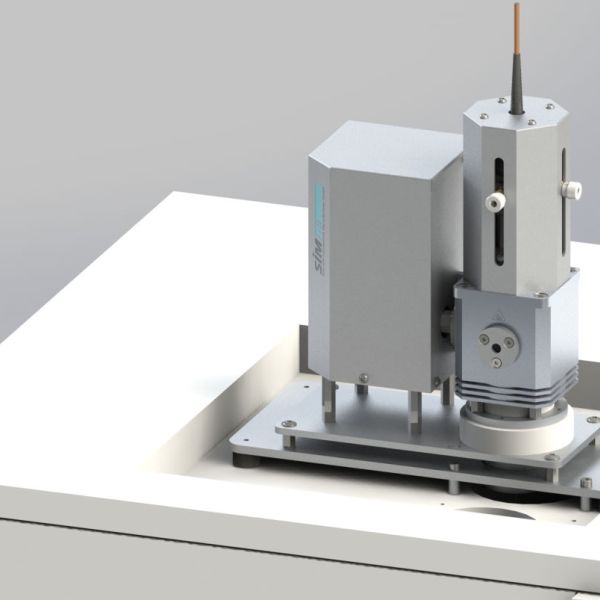EPED GC-Detektor
Trace analysis of halogen and sulfur compounds
The Echelle Plasma Emission Detector (EPED) is an element-specific detector developed for the selective analysis of sulfur and halogen compounds. Compared to the also element-specific AED (Atomic Emission Detector), however, it is more robust and the detection limits are lower by a factor of 5 - 10. The advantage of the EPED over a mass spectrometric detector lies in the equimolar response of the Echelle spectrometer, making quantitation of unknowns and samples without specific standards possible as you need just one standard per element for calibration.
EPED Principle
The operating principle of the detector is based on the atomization of molecules introduced into a helium plasma. The spectral data are evaluated element-specifically with a high-resolution Echelle spectrometer. The detector is mounted on the gas chromatograph so that the analytes reach the plasma cell directly when eluted from the GC column; adsorption effects can be mostly excluded. A pulsed high-frequency microplasma is maintained in the plasma cell by contacting electrodes. Here, the analytes are atomized and induced to emit light. The emitted light is directed into the Echelle spectrometer via an optical fiber. The wavelength of the emitted energy is element-specific and directly proportional to the concentration, so that the peak areas in the chromatogram can be used for quantification. The evaluation is integrated into the Agilent OpenLAB software.
Fields of Application
PFAS and chlorinated peraffins in particular, which are classified as persistent organic pollutants and are therefore regulated throughout the EU, are very complex mixtures of substances with a large number of congeners and isomers. The EPED with the equimolar response is particularly suitable for screenings, as quantitative determination is possible without the need for a reference standard for each individual substance. The selective quantitative determination of individual F and Cl species, but also of a mixture not completely chromatographically separated, is thus made possible achieved via the fluorine or chlorine content.
Features
- element-specific GC detector for halogens and sulfur
- linear range over 3-4 decades
- high sensitivity due to solvent suppression
- evaluation integrated in Agilent OpenLAB software
- trouble-free plasma operation at atmospheric pressure with air cooling:
fuel gas: helium (100 ml/min), reaction gases: O2 and H2 purge gas: N2 (50 ml/min) - long service life of the quartz plasma cell
- robust and low-maintenance detector for routine analysis and research
- fields of application:
PFAS analysis (per- and polyfluorinated alkyl substances)
chlorinated paraffines
brominated flame retardants
sulphur containing pesticides
sulfur content in fuels and much more


